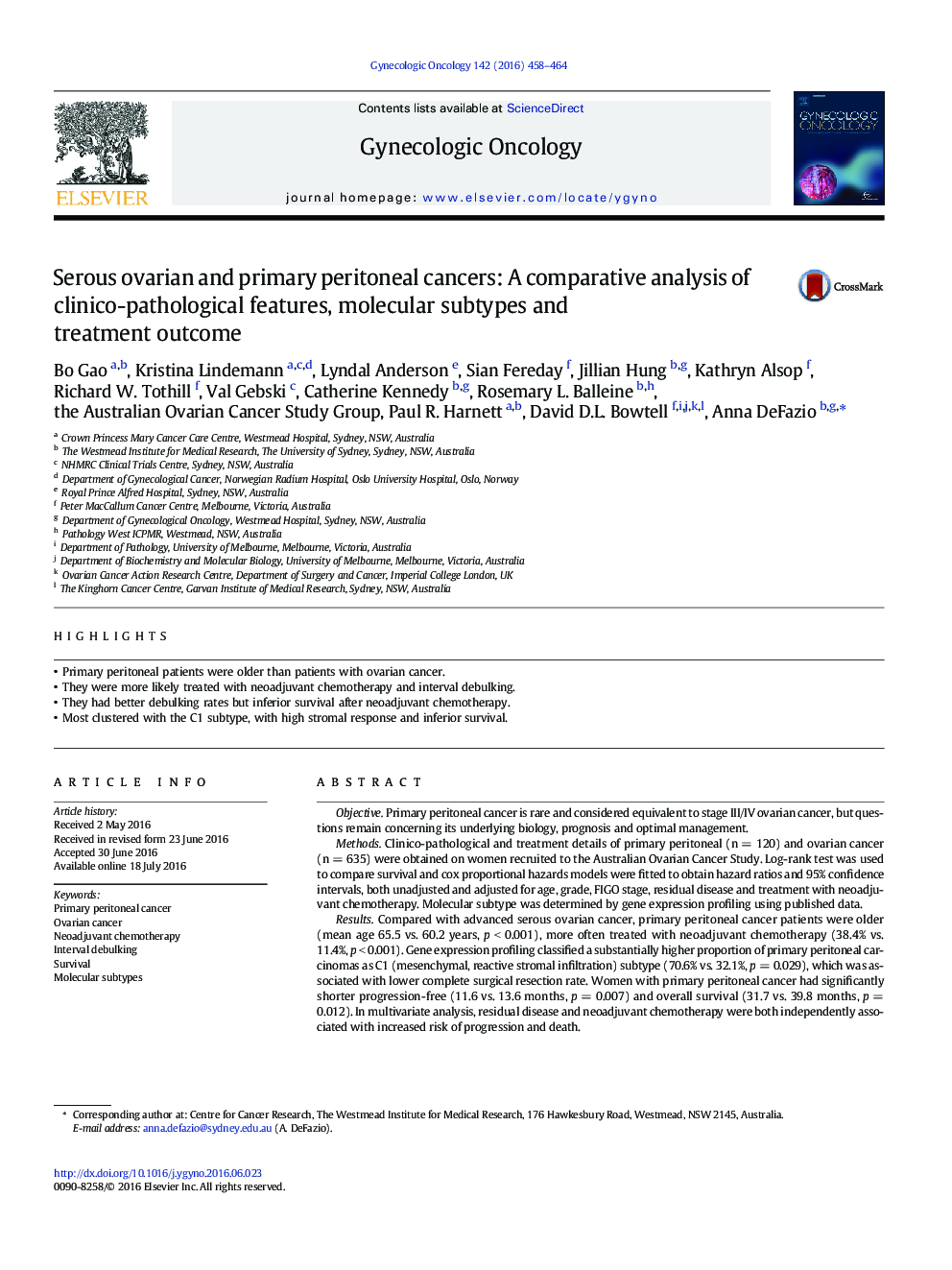| کد مقاله | کد نشریه | سال انتشار | مقاله انگلیسی | نسخه تمام متن |
|---|---|---|---|---|
| 6182976 | 1254057 | 2016 | 7 صفحه PDF | دانلود رایگان |
- Primary peritoneal patients were older than patients with ovarian cancer.
- They were more likely treated with neoadjuvant chemotherapy and interval debulking.
- They had better debulking rates but inferior survival after neoadjuvant chemotherapy.
- Most clustered with the C1 subtype, with high stromal response and inferior survival.
ObjectivePrimary peritoneal cancer is rare and considered equivalent to stage III/IV ovarian cancer, but questions remain concerning its underlying biology, prognosis and optimal management.MethodsClinico-pathological and treatment details of primary peritoneal (n = 120) and ovarian cancer (n = 635) were obtained on women recruited to the Australian Ovarian Cancer Study. Log-rank test was used to compare survival and cox proportional hazards models were fitted to obtain hazard ratios and 95% confidence intervals, both unadjusted and adjusted for age, grade, FIGO stage, residual disease and treatment with neoadjuvant chemotherapy. Molecular subtype was determined by gene expression profiling using published data.ResultsCompared with advanced serous ovarian cancer, primary peritoneal cancer patients were older (mean age 65.5 vs. 60.2 years, p < 0.001), more often treated with neoadjuvant chemotherapy (38.4% vs. 11.4%, p < 0.001). Gene expression profiling classified a substantially higher proportion of primary peritoneal carcinomas as C1 (mesenchymal, reactive stromal infiltration) subtype (70.6% vs. 32.1%, p = 0.029), which was associated with lower complete surgical resection rate. Women with primary peritoneal cancer had significantly shorter progression-free (11.6 vs. 13.6 months, p = 0.007) and overall survival (31.7 vs. 39.8 months, p = 0.012). In multivariate analysis, residual disease and neoadjuvant chemotherapy were both independently associated with increased risk of progression and death.ConclusionsPrimary peritoneal cancer patients were more frequently treated with neoadjuvant chemotherapy and had inferior survival. Different tumor biology characterized by activated stromal fibrosis in primary peritoneal cancer may underlie the differences in treatment and clinical outcome.
Journal: Gynecologic Oncology - Volume 142, Issue 3, September 2016, Pages 458-464
